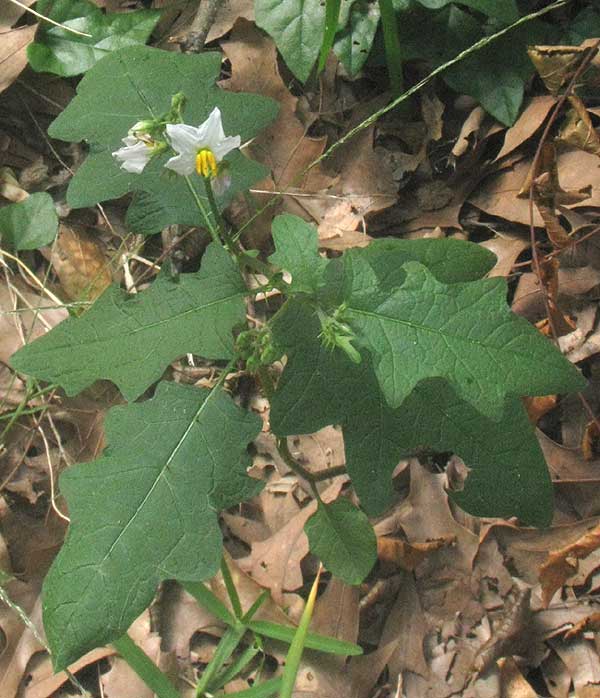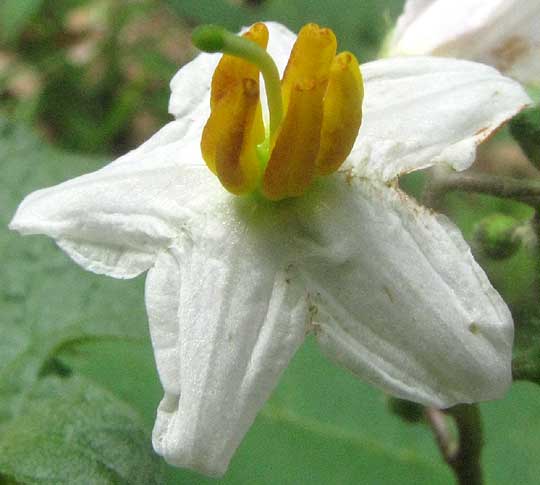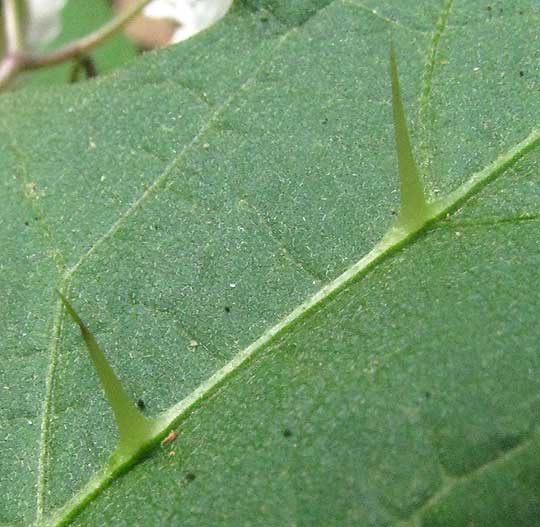Excerpts from Jim Conrad's
Naturalist Newsletter

from the June 17, 2012 Newsletter issued from the woods of the Loess Hill Region a few miles east of Natchez, Mississippi, USA
HORSE NETTLE
Back on the farm in Kentucky no barnyard weed caused me more grief than the Horse Nettle, SOLANUM CAROLINENSE, a plant of which grows beside my trailer, shown above. A close-up of one of the pretty, white flowers is shown below:

The five yellow, banana-like items are anthers -- the stamens' baglike affairs in which pollen is produced. Notice that these anthers are unusual relative to other flowers' anthers in that instead of splitting along their sides to release pollen they develop holes, or pores, at their tops. That's where the pollen escapes. The green, match-stick-shaped thing arising amidst the anthers is the stigma-tipped style, the style being the ovary's "neck." The ovary, or future fruit, is hidden among the anthers' bases.
Anyone knowing a bit about wildflowers recognizes this combination of features as very characteristic of the group of plants known as nightshades, the same nightshades famous for their toxicity. Nightshades belong to the genus Solanum in the Nightshade/Tomato/Potato Family, the Solanaceae. Solanum is one of the largest of all flowering-plant genera, containing between 1500 and 2000 species, depending on your expert.
It wasn't the Horse Nettle's pretty flowers or the herbage's toxicity that gave me problems back on the farm. You can see the troublemakers below:

If you're a barefoot kid and you step on a Horse Nettle leaf with those ¼-inch long (5mm) spines poking straight up from the midrib, the spines will puncture your foot, no matter how calloused the soles are. It's unusual for spines to arise from leaf midribs. In most species if they're present at all they're along the margins or at the petiole's base.
Though Horse Nettle is native to the US Southeast, it's adapted for disturbed habitats and is a tough little plant, so it's spread throughout the US in all but the most arid and cold places, and is even becoming weedy in other countries.
Horse Nettle's yellow ripe fruits are less toxic than fruits of many nightshade members. I remember eating one or two as a kid and finding the taste a little unpleasant but I suffered no ill effects. Herbalists sometimes cook the fruit to serve as a sedative or antispasmodic.
In organic gardens sometimes Horse Nettles are welcomed because they attract certain beetles who prey on vegetable-eating insects.